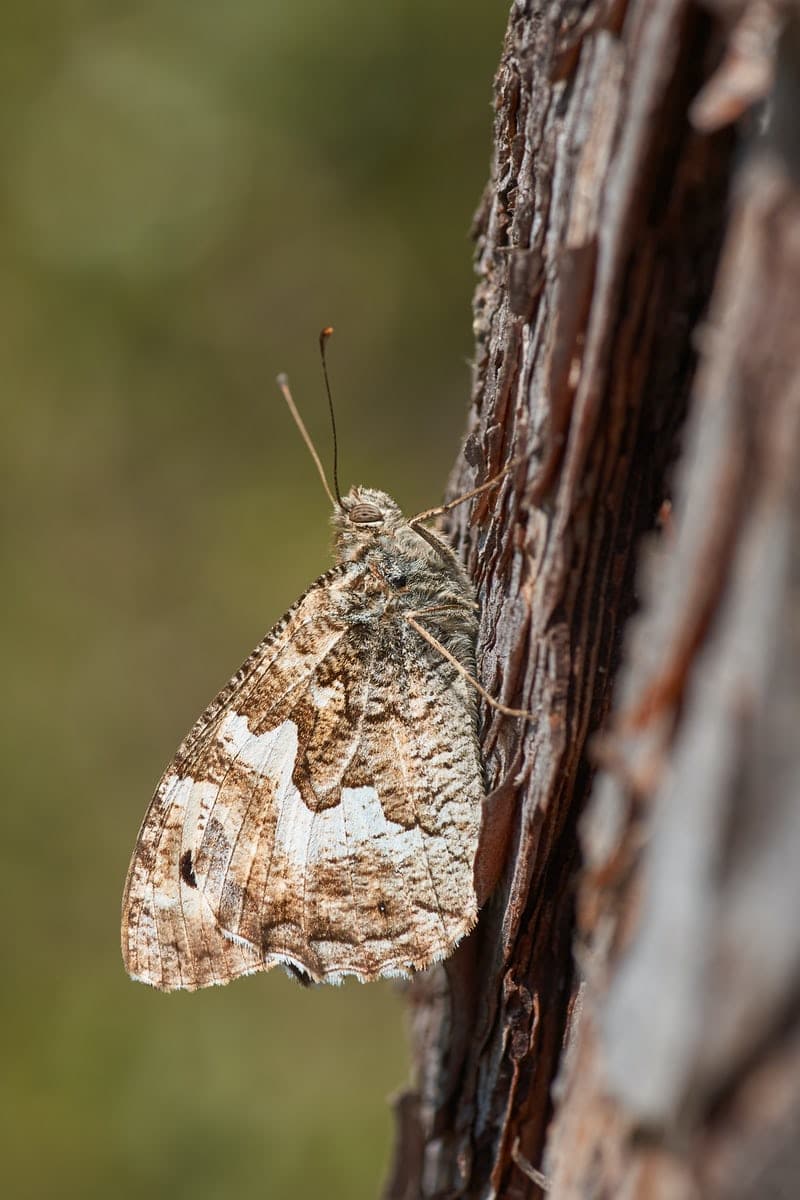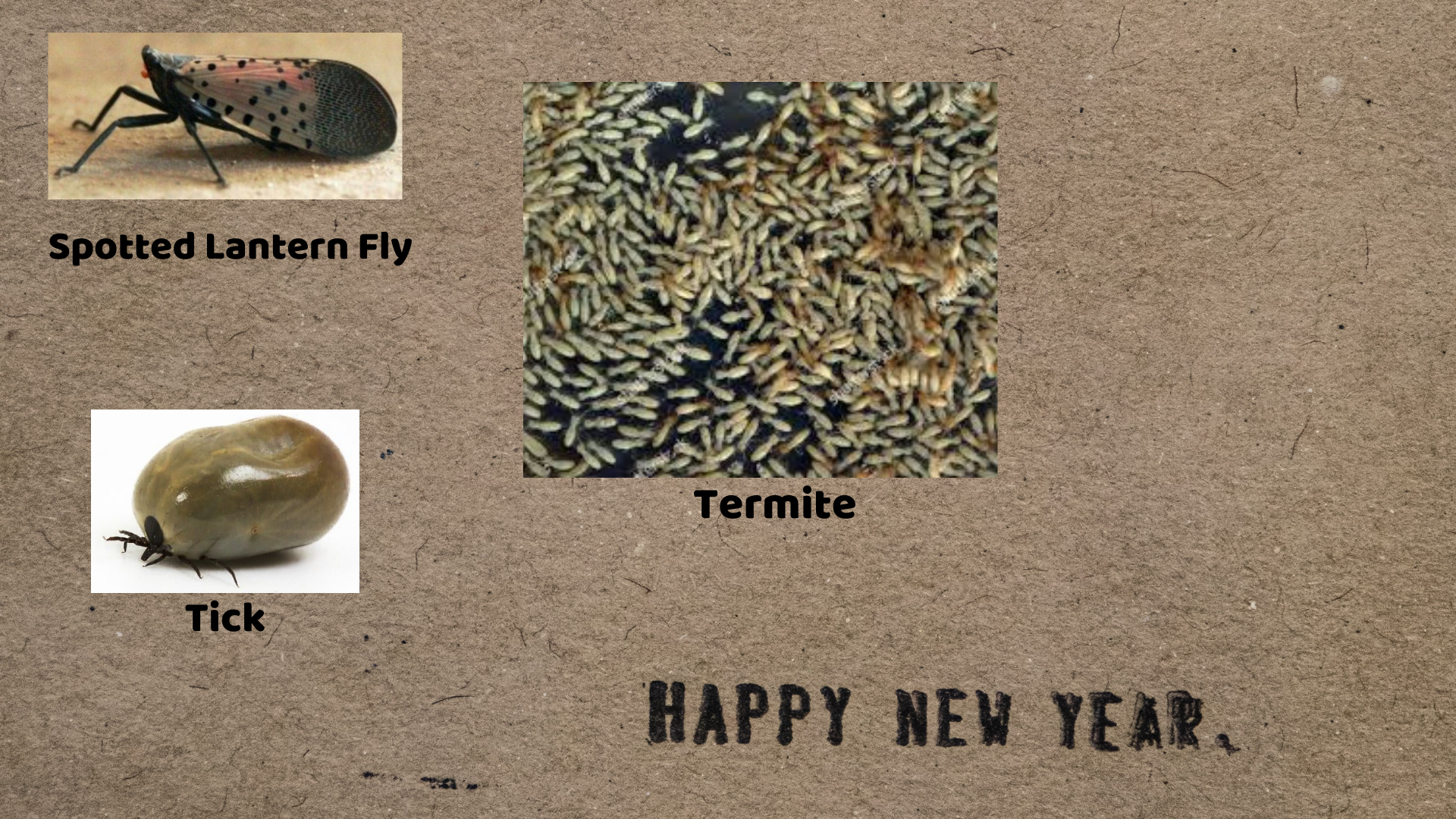New year, new you is the saying! A lot awaits us as soon as the clock strikes midnight, but that doesn’t mean everything from the previous year goes away. While we say good-bye to 2020, there’s no time like the present to gear up against the nasty pests waiting to emerge as the weather gets warm.
While we have a few of the usual suspects, we have some new insects to worry about in 2021, especially in the Wilkes-Barre/Scranton and Hazelton areas. Really, no time is safe from an unwanted pest invasion; whether it’s winter, spring, summer, or fall, here are the top seven pests to look out for in 2021.
1. Overwintering Pests
The first pest on the list might be the first to emerge as temperatures begin to rise. Overwintering pests overstay their winter welcome by hiding away in homes and garages, waiting for spring. While they don’t necessarily do heavy damage to your home, they can be annoying and cause a bit of trouble once the hatch begins.
Asian lady beetles are one of these unwanted houseguests. They will typically hatch in large numbers, gather near warm areas, like a sunbathed window, and they tend to leave nasty yellow streaks wherever they go. Plus, they give off a foul odor if you accidentally squish them. These aren’t the only pests that manage to sneak inside before winter. Other overwintering pests include stink bugs, box elders, and crickets. Again, while they may not cause huge problems, you probably don’t want them in your home.
2. Ticks
Believe it or not, ticks are an all-year problem. These tiny little bloodsuckers can hide away in piles of leaves, wood, or even under the snow. Ticks burrow and these piles can provide plenty of insulation. Additionally, they have evolved a trait that acts like anti-freeze, protecting them from the cold. That doesn’t mean they won’t die if temps drop. However, they can survive the winter – especially a mild one. This year hasn’t been exactly shivering in below zero temperatures, so ticks may be out in higher numbers come spring.
Ticks will become more plentiful as the weather warms, and though they are little, they carry some huge problems. These little pests carry numerous life-threatening diseases, such as Lyme and Rocky Mountain Fever. Though they do not fly, they can drop down or grab on to any host that passes by.
3. Spotted Lanternfly
The last few years have brought Pennsylvania a unique, new invasive pest in the spotted lanternfly. Unusually colored, these insects are terrorizing local trees and crops. While they may not be dangerous to humans, in particular, they can prove devastating to the economy and ecosystem. Spotted lanternflies feed on local vegetation such as asps, oaks, and other trees. They also attack apple trees, grapevines, and other crucial crops.
While there is an effort to contain this invasive species, it has found its way around Pennsylvania. They can be transferred by vehicles, lawn furniture, Christmas trees, and more. The goal is to stop the spread and limit their access to new areas before they cause more damage.
4. Mosquitoes
These nasty biting insects are always a problem when seasons change. As snow thaws and stagnant water forms in buckets, gutters, or even puddles, it’s prime time for mosquitoes to breed. All they need to lay eggs are blood and a little still water. Mosquitoes aren’t just annoying little fling pests; they are one of the deadliest creatures alive.
Mosquitoes are known for spreading illnesses like West Nile virus, Malaria, and yellow fever, to name a few. While winter may give us a slight reprieve, the change in weather signals their return and they can make going outside a nightmare.
5. Black Gnats
Like mosquitoes, black gnats are plentiful as spring rolls around. In fact, their numbers seem to get worse and worse every year. They usually breed in areas high and moisture, and they are especially attracted to faces. These little beasts can make going outside unbearable, as they aim for areas with high moisture, like your eyes, nose, and mouth.
These pests are not just annoying; if a swarm is big enough, it can kill small animals. Plus, they have a nasty bite.
6. Termites
No matter the time of year, termites are always a danger. While they may not pose a threat to humans directly, they cause millions in structural damage every year. As it gets closer to spring, the swarming season draws nearer, and colonies can grow. What may be a small problem now can grow larger, and unfortunately, a termite infestation can be hard to spot until it’s too late. One of the best times to catch them is during a swarm since they leave behind shedded wings as evidence.
7. Gypsy Moths
The final pest to look out for in the new year is an invasive species that seems to come and go. Gypsy moths, like spotted lanternflies, target local greenery. They tend to lay large egg masses on apple, alder, aspens, pines, spruces, and more. While an infestation isn’t a death sentence the first time, if it is not taken care of, gypsy moths can cause a lot of damage.
Eggs hatch from mid-April to early May. Egg masses should be removed from trees and disposed of properly to stop the spread.

How Can We Prepare This Year?
As spring approaches, you don’t have to worry about doing battle with pests if you take a few precautions. Perform regular maintenance on your home by sealing up cracks, holes, and damage that may let pests sneak inside. Keep gutters clear of growth, leaves, and other blockages to keep water flowing. Keep a clean home to spot any signs of termites and to discourage insects from gathering.
Perform regular maintenance on your lawn and keep overgrowth to a minimum to discourage ticks. Also, you can keep an eye out for any egg masses from either of the invasive species. Finally, you can get regular home inspections to safeguard against possible invaders. Stay on top this new year by keeping bugs and pests out.




























